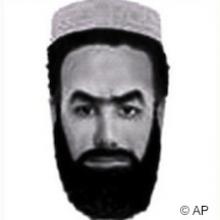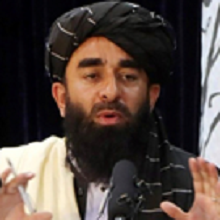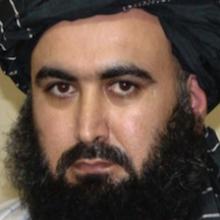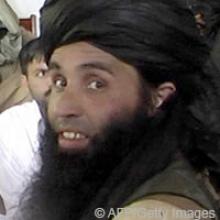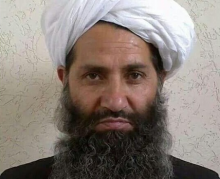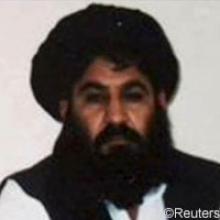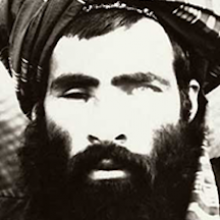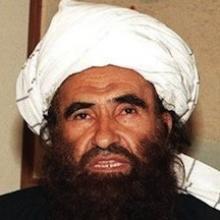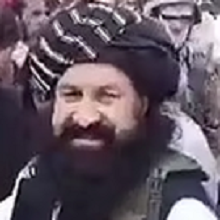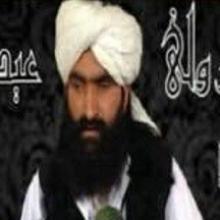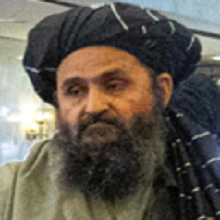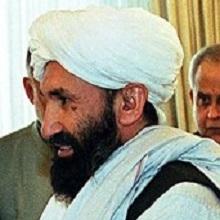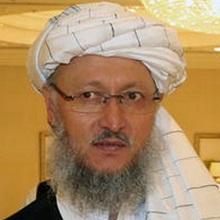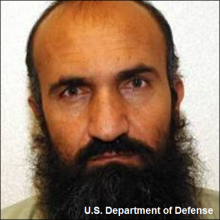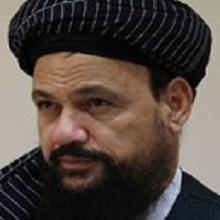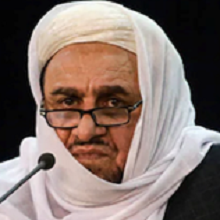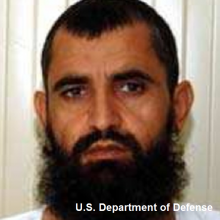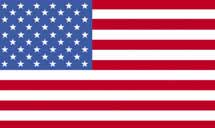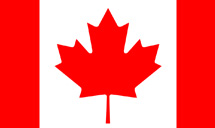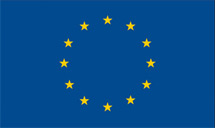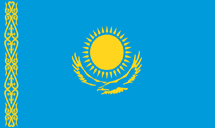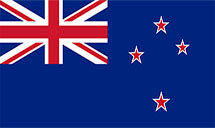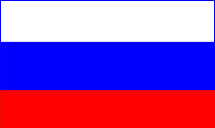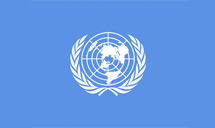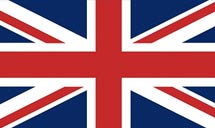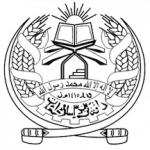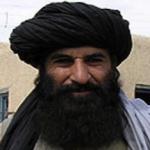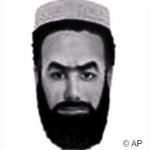Executive Summary:
The Taliban (Pashto for “students”) are the predominant umbrella group for the Afghan insurgency, including the semi-autonomous Haqqani network. (The Taliban’s offspring across the border, the Pakistani Taliban, share the ideology and objectives of its namesake but operate independently and focus on overthrowing the Pakistani government.) January 2018 estimates by Afghan and U.S. officials gauged that the Taliban included at least 60,000 fighters, up from 2014 U.S. estimates of 20,000 fighters. These forces have allowed the Taliban to remain a credible fighting force with the ability to win and hold territory. According to a U.N. report released in September 2015, the Taliban had reclaimed more territory in Afghanistan by that time than at any point since the 2001 U.S.-led coalition invaded in response to the September 11 attacks. By September 2017, the Taliban reportedly controlled or contested up to 45 percent of Afghanistan. According to an October 2018 report by the Special Inspector General for Afghanistan Reconstruction’s (SIGAR), the Taliban controlled more territory in Afghanistan than it had at any other point since 2001. SIGAR reported that the Afghan government controlled or influenced just 55.5 percent of the country, the lowest level reported since 2015 when the government controlled 72 percent. The Taliban have continued to attack and capture territory across Afghanistan. In the month and a half after the United States began its withdrawal from Afghanistan on May 1, 2021, the Taliban captured at least 27 districts across Afghanistan. In the SIGAR quarterly report released on July 30, 2021, it was reported that the Taliban controlled more than 210 districts by July 21, 2021.
Afghan security forces have suffered immense casualties throughout the war. In an interview on December 4, 2018, U.S. Central Command commander, Lieutenant General Kenneth McKenzie, stated that Afghan “losses are not going to be sustainable.” In January 2019, Afghan President Asraf Ghani claimed that 45,000 Afghan security personnel had been killed since 2014, nearly double that of previous estimates. Later that month, U.S. Special Representative for Afghanistan Zalmay Khalilizad met with representatives of the Taliban in Doha, Qatar for six days of negotiations around a “comprehensive ceasefire” that would be the first step in an overall negotiated peace. On January 28, 2019, the U.S. government and Taliban reportedly agreed to a framework for a peace agreement to end the war in Afghanistan that would include the Taliban preventing “Afghanistan from ever becoming a platform for international terrorist groups or individuals” in return for a U.S. military withdrawal. The Taliban delegation then met with Afghan politicians on February 4 in Moscow, Russia, where the two parties discussed a broad plan for ending the war.
The Taliban’s current leader, announced in May 2016, is Haibatullah Akhundzada. The Taliban were founded in 1994 by Mullah Mohammed Omar in Kandahar to impose a puritanical Islamic order on Afghanistan. The Taliban’s roots can be traced to the Pakistani-trained mujahideen who fought against the Soviet occupation of Afghanistan. The predominantly Pashtun tribesmen that comprised the Taliban quickly consolidated power by force throughout Afghanistan and, in 1996, seized control of the capital, Kabul. The “Emirate of Afghanistan,” as the Taliban refer to their domain, was born. With generous financial support from Saudi Arabia and Pakistan, especially the latter’s Inter-Services Intelligence (ISI) agency, the Taliban enforced a strict code of sharia (Islamic law) and harbored al-Qaeda and other jihadist organizations. The Taliban-run government in Afghanistan was recognized by only three countries: Pakistan, Saudi Arabia, and the United Arab Emirates (UAE).
While the Taliban hosted al-Qaeda, Osama bin Laden’s group ran training camps and planned and executed numerous terrorist attacks, including the multiple airplane hijackings and strikes against the United States on September 11, 2001. In the aftermath of 9/11, the Taliban rejected a U.S. ultimatum to turn over bin Laden and kick out al-Qaeda. In response, the U.S. and allied countries invaded Afghanistan and swiftly deposed the Taliban government.
Since being driven out of Kabul, the Taliban have operated as an insurgent force in both Afghanistan and Pakistan, attempting to expel NATO forces from Afghanistan and defeat the democratically elected Afghan government. Attacks on Afghanistan’s security forces have increased as Western forces have begun to withdraw from the country in recent years. As government authority has weakened, Taliban forces have filled the vacuum. By December 2015, vast swathes of Helmand Province had fallen to the Taliban. U.S. Special Operations forces responded by taking aggressive steps to halt this advance. One year later, according to the Pentagon, the Taliban retained control of less than 10 percent of the Afghan population, while another roughly 26 percent remained contested. As of October 2018, though, the Afghan government controlled or influenced just 55.5 percent of the country. On February 29, 2020, U.S. and Taliban representatives meeting in Doha, Qatar, signed an agreement for a staggered U.S. troop withdrawal in exchange for a Taliban commitment to prevent terror groups such as al-Qaeda and ISIS from using Afghanistan as a base from which to plot against the United States. The Taliban also agreed to negotiate a permanent ceasefire with other Afghan militants and the Afghan government. The Afghan government voiced immediate objections a clause calling for a prisoner swap with the Taliban as a precondition for negotiations.
The Taliban’s wing in Pakistan has repeatedly attacked the Pakistani government and the country’s civilians. Such attacks include the October 2012 shooting of 15-year-old education activist Malala Yousafzai as well as the December 2014 massacre of 132 children at an army-run school in Peshawar. On January 20, 2016, the Taliban claimed responsibility for two attacks that together claimed over 20 lives: one targeting a university near Peshawar, and the other on a news crew in Kabul. In August 2016, the Taliban forged a ceasefire with ISIS after more than a year of intense combat between the radical Islamist groups.
Senior American generals have accused Russia of arming the Taliban. General Curtis Scaparrotti, NATO’s Supreme Allied Commander, Europe and the commander of U.S. European Command, warned in March 2017 that “I've seen the influence of Russia of late—increased influence in terms of association and perhaps even supply to the Taliban.” Likewise, the top American commander in Afghanistan, General John Nicholson, said in April 2017 that Russia is providing weapons to the Taliban. Taliban officials claim that the group has had prominent contacts with Russia since at least 2007, but that Russia’s role with respect to the Taliban does not go beyond “moral and political support.” Russia denies that it is aiding the Taliban, claiming that Moscow is simply trying to get the group to engage in diplomatic negotiations.
In July 2018, U.S. and Taliban officials began discussions on peace talks to end the war in Afghanistan with the understanding that the Taliban and Afghan government should lead the process. The Qatari government agreed to mediate between the Taliban and the Afghan government. By April 2019, the United States and Taliban had reached a framework agreement that included a U.S. withdrawal from Afghanistan, but talks between the Taliban and the Afghan government had stalled. In February 2020, U.S. and Taliban negotiators reached a preliminary deal that demanded a reduction in violence from the insurgent camp in exchange for a drawdown of U.S. troops in Afghanistan. The United States agreed to draw its forces down from 13,000 to 8,600 in the next three to four months, with the remaining U.S. forces withdrawing in 14 months. In exchange, the Taliban agreed to renounce al-Qaeda and prevent al-Qaeda and other groups from using Afghanistan as a base for terrorism against the United States. The Taliban also agreed to negotiate a permanent ceasefire with other Afghan militants and the Afghan government. The U.S. troop drawdown is dependent on the Taliban maintaining its commitments. The agreement also called for permanent ceasefire and power-sharing talks that March between Afghan militant groups as well as between the Taliban and the Afghan government.
Despite the agreement, the Taliban have continued to direct their attacks toward Afghan security forces. An April 2020 report by the U.S. Office of the Special Inspector General for Afghanistan Reconstruction (SIGAR) called Taliban attacks in March “above seasonal norms.” At the same time, NATO’s Resolute Support mission noted that the Taliban had refrained from targeting coalition forces but had increased attacks on Afghan forces. A May 2021 report to the U.N. Security Council by an Afghanistan monitoring team concluded the “Taliban’s messaging remains uncompromising, and it shows no sign of reducing the level of violence in Afghanistan to facilitate peace negotiations….” The monitoring team also reported continuing ties between the Taliban and al-Qaeda. Despite continuing Taliban violence, in January 2021 the United States drew down its forces in Afghanistan to a 19-year low of approximately 2,500. That same month, however, the Pentagon accused the Taliban of failing to live up to its responsibilities to reduce violence, while the European Union, NATO, and several Western embassies jointly accused the Taliban of responsibility for the majority of recent violence. According to Afghan security officials, hundreds of Taliban fighters released in 2020 under the U.S. agreement have since been re-arrested. Further, a February 2021 U.S. Department of Defense report found the Taliban were maintaining their links to al-Qaeda. In April 2021, U.S. President Joe Biden pledged to withdraw all remaining U.S. forces from Afghanistan by September 11, 2021, pushing back the May 1 deadline set by his predecessor. However, an April 2021 assessment by the U.S. Director of National Intelligence reported the Taliban are “likely to make gains on the battlefield, and the Afghan Government will struggle to hold the Taliban at bay if the coalition withdraws support.”
The United States began to withdraw its military from Afghanistan on May 1, 2021, and planned to complete the withdrawal by September 11 that year. Despite its negotiations with the United States and the Afghan government, the Taliban began an offensive that month against Afghan forces. On August 6, the Taliban captured its first major city. The victory led the Taliban to capture an additional eight major cities across Afghanistan over the next five days. By August 11, the Taliban reportedly directly controlled or contested more than half of Afghanistan’s 407 districts. U.S. intelligence officials estimated the Taliban could capture Kabul within 90 days. By August 11, the United States had completed 95 percent of its military withdrawal from Afghanistan. U.S. envoy Zalmay Khalilzad warned the Taliban against pursuing a military victory in Afghanistan. On August 15, Afghan President Ashraf Ghani fled Afghanistan as Taliban fighters entered Kabul. The Taliban took complete control of Kabul by August 16, after which the Taliban declared the war in Afghanistan had ended.
Doctrine:
The Taliban are an Islamist movement that seeks to establish a caliphate under sharia (Islamic law). Islamists of this mold embrace Salafism, an austere and radical interpretation of Islam, holding that Muslims should emulate the actions of the first generation of Muslim leaders, who are known as the righteous. The Taliban repudiate more than 1,000 years of Islamic jurisprudence and instead impose a strict code of Islamic law. Under Taliban rule, a religious police force was officially established under the guise of “the Ministry for the Suppression of Vice and the Promotion of Virtue.”
This fundamentalist ideology was evident in the name they adopted. They called themselves Taliban (students) and embraced the strict Deobandi interpretation of the faith. This school was a branch of Sunni Hanafi Islam that developed in the late nineteenth century in the madrassas (religious schools) of British India. The Deobandis emphasized Islamic learning, and aimed to raise a new generation of pious Muslims who would learn the Quran as well as the lived experience of Islam’s prophet Muhammad. The Deobandis’ vision consigned women and Shiite Muslims to the margins of society, and flattened all forms of hierarchy in the ummah (community of believers).
The Taliban’s fundamentalist ideology is overlaid with a strong Pashtun tribal affiliation. In addition to stoking rivalries between Afghanistan’s non-Pashtun ethnic groups, the Taliban’s tribal emphasis on being a good host dictated that it maintain good relations with al-Qaeda despite doctrinal disputes. One of the fiercest disputes between the Taliban and al-Qaeda regarded the Saudi royal family, which simultaneously opposed al-Qaeda’s brand of radicalism while financing the madrassas (Muslim schools) in Pakistan that helped foster and maintain the Taliban’s influence.
After seizing power in Kabul in 1996, the Taliban announced its aims to impose order, disarm the Afghan population (especially rival ethnic groups), enforce sharia, and defend the Islamic character of the “Emirate of Afghanistan.” The Taliban banned most sporting events and forms of entertainment, from poetry and music to kites. They closed all girls’ schools and prohibited women from appearing in public except under strict supervision by a male relative. Even when women were in their respective homes, the windows were painted black to prevent passersby from glimpsing women in their private quarters.
The Taliban promotes jihad as a “divine obligation,” while failure to support jihad is a sin, according to a June 2017 propaganda video. Taliban spokesman Zabihullah Mujahid has particularly encouraged jihad during the Muslim holy month of Ramadan, as the heavenly reward is multiplied during that time.
Since the rise of ISIS, the Taliban have emphasized preserving pan-Islamic unity. Following al-Qaeda’s example, the Taliban have advised ISIS to “avoid extremism” that risks splintering the violent Islamist movement across the broader Middle East. Mullah Omar in particular reaffirmed the Taliban’s priority of establishing a unified Islamist movement to expel the “far enemy” (the Western powers). Omar referred to ISIS leader Abu Bakr al-Baghdadi as a “fake caliph,” asserting, “Baghdadi just wanted to dominate what has so far been achieved by the real jihadists of Islam after three decades of jihad. A pledge of allegiance to him is ‘haram.’” Despite these warnings, hundreds of Taliban members have joined ISIS’s Pakistani branch.
Organizational Structure:
For most of their existence, the Taliban were led by their founder, Mullah Mohammed Omar, a.k.a. the Emir ul-Momineen (commander of the faithful). In July 2015, an Afghan government spokesman reported that Omar had died in April 2013. The Taliban confirmed the leader’s death, and reportedly appointed Deputy Emir Mullah Akhtar Mohammad Mansour as Omar’s successor. On May 25, 2016, four days after Mansour was killed in a U.S. drone strike, the Taliban’s senior leadership announced that Mullah Haibatullah Akhundzada would succeed Mansour as emir of the Taliban.
As the emir of the Taliban, Akhundzada is responsible for overseeing the courts and judges. He also oversees the 11 Taliban commissions, which deal with the military, politics, culture, economics, health, education, outreach and guidance, prisoners, non-governmental organizations, martyrs and disabled persons, and civilian casualties. In August 2016, Maulvi Ibrahim Sadar was appointed the military commander of the Taliban.
The group’s ruling council, called the Quetta Shura, is responsible for much of the Taliban’s operations in southern and western Afghanistan. The Shura consists of an estimated 23 to 46 members. It was founded in the winter of 2002, when Omar allegedly relocated the Taliban organization to Quetta, Pakistan. In November 2016, the Shura reportedly relocated to Afghanistan’s southern Helmand province.
Below the emir sits the deputy emir, who was reported to be Sirajuddin Haqqani. The deputy emir oversees the leadership and consultative councils, responsible for determining the “political and military affairs of the Emirate,” according to the United Nations. Below the councils sit the judges, who reportedly run courts inside Afghanistan at the supreme, provincial, and district levels.
According to a report by General Stanley McChrystal, former commander of the International Security Assistance Force (ISAF) and U.S. forces in Afghanistan, the Quetta Shura reportedly appoints a simulated government structure for Afghanistan, assigning “shadow” governors to many Afghan provinces and reviewing the performance of each governor. In 2009, the Shura established a committee to receive complaints about the governors from Afghani locals. The Shura “[installs] ‘shari’a’ courts to deliver swift and enforced justice in contested and controlled areas. [It levies] taxes and [conscripts] fighters and laborers.” It claims “to provide security against a corrupt government, ISAF forces, criminality, and local power brokers [and] to protect Afghan and Muslim identity against foreign encroachment.”
According to a 2009 Institute for the Study of War report, “[the Quetta Shura continues] to refer to [itself] as the Islamic Emirate of Afghanistan, despite being removed from power in 2001…the Taliban see themselves as the legitimate government of Afghanistan and aim to extend their control over the entirety of the country.”
While the Quetta Shura runs the Taliban’s insurgency in southern and western Afghanistan, a Taliban military commission in Peshawar, Pakistan, reportedly directs the insurgency in Afghanistan’s north and east. The Peshawar military commission reportedly oversees a total of 20 provinces divided into six command zones, one of which falls under the Haqqani network’s purview.
In January 2017, Reuters reported that Akhundzada had recently replaced Taliban shadow governors in 16 of Afghanistan’s 34 provinces and appointed eight additional provincial-level officials as part of an effort “to consolidate his influence over the insurgency.” One of the shadow-gubernatorial appointments, Baz Mohammad for Wardak province, was viewed as particularly significant for Akhundzada’s position because Mohammad had been in a splinter group that had rebelled against former Taliban leader Mansour.
Following the Taliban’s takeover of Kabul on August 15, 2021, the Taliban announced the appointments to their caretaker government on September 7, 2021. At the helm of the movement is Akhundzada, who will serve as supreme leader. Mullah Muhammad Hassan Akhund was named the acting prime minister, with Mullah Abdul Ghani Baradar and Mawlawi Abdul Salam Hanafi named deputy prime ministers. The top security post was given to Sirajuddin Haqqani, who will serve as acting minister of the interior, a role in which he will have extensive authority over policing and legal matters. Mawlawi Mohammad Yaqoob, who is the oldest son of Taliban founder Mullah Muhammad Omar, is named the acting defense minister. The government is exclusively male, with many positions filled with veterans from their hardline movement in the early nineties. On May 17, 2023, Taliban spokesman, Zabihullah Mujahid, announced that Abdul Kabir Mohammad Jan (a.k.a Abdul Kabir), the deputy prime minister for political affairs, would temporarily fulfill the duties of prime minister of the Taliban government. Akhund is reportedly unwell and is undergoing treatment.
The Pakistani Taliban, formally known as Tehrik-i-Taliban Pakistan (TTP), has extensive links to the Taliban, but it remains a distinct organization with its own objectives. TTP distinguishes itself from the Taliban in its primary objective, which is to overthrow the Pakistani state and inaugurate an Islamic state. It is less an organized force than a loose coalition of tribes sympathetic to the broad mission of the Taliban but driven by its own local concerns.
Financing:
As of December 2017, the U.S. military estimated the Taliban budget to be between $300 million and $500 million a year. Approximately $200 million (60 percent) of that budget is derived from the illegal narcotics trade. In May 2020, a U.N. report estimated the Taliban’s annual financial earnings “range from $300 million to upwards of $1.5 billion per annum.” By the end of its fiscal year in March 2020, the Taliban reportedly earned $1.6 billion. Taliban military leader Mullah Mohammad Yaqoob allegedly took control of the Taliban’s finances and expanded their financial holdings through the illegal drug trade, illegal mining, and exports. Under Yaqoob’s guidance, the Taliban have expanded in regions of Afghanistan with exploitable mineral resources. The Taliban have capitalized on these resources to fuel their fiscal growth, allegedly exceeding their own expectations. According to a 2020 confidential NATO report compiled by researcher and journalist Lynne O’Donnell, the Taliban were reportedly close to achieving financial independence. O’Donnell concluded the Taliban’s growing financial power could “put it beyond pressure to comply with obligations to cut ties with [Al-Qaeda] and other terrorist groups.”
In its early years, the Taliban received substantial financial support from the governments of Pakistan and Saudi Arabia. The Taliban has also generated much of its revenues from opium production. While both the Afghan and Pakistani Taliban accrue funds from narcotics, they also profit from foreign donations, illegal gem mining, lumber trade, kidnapping, and extortion. A 2012 U.N. report estimated that the Taliban collected $400 million in 2011 through extortion, taxes, and drugs. According to that report, the Taliban leadership received $275 million while the rest was misappropriated or spent on local levels.
The Taliban reportedly raked in record profits in 2013, with fighters earning so much that they have had no incentive to quit the insurgency. In Pakistan, however, Tehrik e-Taliban Pakistan (TTP) factions struggling for funds have turned to kidnapping “wealthy businessmen for ransom,” according to a 2014 U.N. report.
The Taliban use hawala, a trust-based financial transfer system that predates the time of the prophet Muhammad. U.S. officials suspect that the Taliban make monthly payments to their fighters and receive hefty donations through hawala.
Drugs and Cigarettes
Afghan President Ashraf Ghani has called the Taliban’s drug trade “a very important driver of” the war in Afghanistan. The U.N. Office on Drugs and Crime estimated in 2016 that the opium trade in Afghanistan doubled to about $3 billion in 2016, and the Taliban has continuously boosted its involvement in the illicit trade. According to Afghan officials, the Taliban has used increased instability in the country to increase the number of its drug refinement labs and move them closer to Afghanistan’s opium fields. U.S. military officials estimated that the Taliban had 400 to 500 drug labs in the country by the end of 2017. According to a 2018 U.N. report, the Taliban uses legal structures belonging to local Afghan expatriates in the Gulf region to launder drug revenues.
In 2010, the Pakistani military estimated that the Pakistani Taliban pocketed an average of $200 million every year from Afghan poppy profits. A 2012 U.N. report estimated that the Taliban earned $100 million from the opium trade in 2011-12. According to February 2018 testimony by Deputy Secretary of State John Sullivan, the Taliban derived 65 percent of its revenue from narcotics. The U.S. Department of Defense estimated in 2018 that the Taliban placed “greater emphasis on narcotics as a primary source of revenue” than in the past. A December 2017 U.S. airstrike destroyed 25 illegal drug factories in the Helmand province, representing an $80 million loss to Afghan drug lords. The military estimated that approximately $16 million of that amount would have been transferred to the Taliban.
David Cohen, then U.S. Treasury Under Secretary for Terrorism and Financial Intelligence, said in 2009 that the Taliban profit from every step in opium production. According to Cohen, the Taliban extort “funds from those involved in the heroin trade by demanding ‘protection’ payments from poppy farmers, drug lab operators and the smugglers who transport the chemicals into, and the heroin out of, the country.” According to sources in the Afghan government, the Taliban claims one-third of the proceeds stemming from Afghanistan’s illegal-but-lucrative $2 billion heroin trade. The Taliban have denied involvement in the heroin trade.
The TTP also reportedly control the Pakistani trade of counterfeit cigarettes, which may account for 20 percent of their funding. According to a private security analyst in Pakistan, “[the TTP] simply receive taxes on a regular basis from owners of illegal and legal cigarette factories and later for the safe passage they provide to the convoys.”
International supporters have also undertaken drug trafficking to finance the Taliban and the Haqqani network. In December 2024, Haji Abdul Satar Abdul Manaf was sentenced by the U.S. District Court for the Southern District of New York to 30 years imprisonment on charges of attempting to engage in narco-terrorism on behalf of the Haqqani network and the Taliban. Manaf was previously sanctioned by the U.S. in June 2012 for donating thousands of dollars to the Taliban to assist in their operations. Manaf began importing heroin into the United States in January 2018, the profits of which he allocated to the Haqqani Network.
Misappropriated Foreign Funds
Private Afghan security companies hired by the United States have reportedly paid off Taliban insurgents with “protection money,” according to the U.N. A 2010 NPR report claims that “resupply convoys navigating the hazardous Afghan highway system frequently have to hire security firms to protect them, and as often, these security firms pay off militias that control key stretches of road.” In 2009, U.S. military officials in Kabul estimated that at least 10 percent of the Pentagon’s security contracts eventually end up in Taliban hands—amounting to hundreds of thousands of dollars. Reuters has reported that “many Afghans” support the Taliban’s accruement of foreign funds. According to one Kabul resident, “This is international money. They are not taking it from the people, they are taking it from their enemy.”
In 2017, Afghanistan ranked ninth in the world for pistachio production. As of 2017, the Taliban reportedly made $15 million annually from illegally harvesting Afghanistan’s pistachio trees. The Taliban favors pistachios because they do not require cultivation, like peanuts and other nuts, according to Afghanistan’s Agriculture Ministry. The Taliban and other criminals have illegally harvested up to 40 percent of Afghanistan’s pistachio crops, which are typically ripe for picking in mid-summer. In other areas under Taliban control, the group reportedly collects one-tenth of farmers’ harvests by force. Farmers accuse the Taliban of using the money for weapons, but worry they will be killed if they refuse to turn over their crops. Saad Khatabi, president of the Herat Chamber of Commerce, told Voice of America in May 2017 that the Taliban’s early harvesting of Afghan pistachio crops “damages the agriculture and economy of Afghanistan enormously.”
International Backers
As of 2018, foreign revenue accounted for at least $500 million a year for the Taliban. In the 2020 financial year, the Taliban allegedly received $240 million from foreign countries and individuals alone. The Taliban reportedly receive donations from oil-rich Gulf Cooperation Council (GCC) countries. According to a 2009 New York Times report, the Taliban collect funds from anonymous citizens in “Saudi Arabia, Pakistan, Iran and some Persian Gulf nations.” Haroun Mir of the Afghanistan Center for Research and Policy Studies said in 2010 that “our estimates are in Afghanistan that between $150 [million] to $200 million every year reaches directly to Taliban via this network of charities that exists in the Gulf countries.” Former Taliban finance minister Agha Jan Motasim told the New York Times in December 2016 that he regularly traveled back and forth to Saudi Arabia to collect donations after the fall of the Taliban government. A 2019 U.S. Defense Intelligence Agency report concluded Iran provided the Taliban with financial, political, training, and material support.
Taxes
Taliban insurgents have been known to practice forced conscription, taxing locals if they refuse to join. Some Afghans have reportedly been forced to pay $1,000 to the Taliban for refusing to join. According to a displaced local in Lashkar Gah, Afghanistan, in 2015, “Many people join the Taliban simply because they do not have any other option.” In the 2020 financial year, the Taliban collected approximately $160 million annually from illegal taxes imposed on Afghan businesses.
TPP insurgents reportedly offer protection to locals in exchange for high sums of money. If locals refuse the protection, the insurgents threaten to kill them. The extortion has become so commonplace in Karachi, Pakistan, that locals now call it the “terror tax.”
In 2010, a GlobalPost report alleged that the TTP also imposed jizya (a sharia-mandated tax on non-Muslims living in Muslim lands) on the Sikh minority in areas under their control.
In 2005, a television camera crew captured the image of locals paying tax to Taliban insurgents in Swat, Pakistan. According to a 2010 GlobalPost report, “Wooden carts with mounds of cash were parked on the street sides as women were seen dropping their jewelry into bags for masked young men carrying AK47s.”
The New York Times reported in January 2017 that the Taliban were now collecting revenue from electricity bills, as well as taxes on “potato harvests, flour mills, teachers’ salaries, marriage ceremonies, and fuel and vegetable trucks crossing their checkpoints.”
Real Estate
The Taliban allegedly receive approximately $80 million annually from real estate properties in Afghanistan, Pakistan, and possibly other countries.
Mining and Minerals
The Taliban have seized control of Afghan mining sites to increase its revenue from legal and illegal mining of iron ore, marble, copper, gold, zinc, and other metals and rare-earth minerals. In 2014, the United Nations reported the Taliban received more than $10 million a year from 25 to 30 illegal mining operations in Helmand province. Reportedly, Afghan mining companies pay the Taliban under threat of violence to allow them to keep operating. In 2015, the Taliban earned approximately $4 million alone from the mining of the mineral lapis. In 2016, the Taliban earned $35 million from revenues from the sale of minerals. That figure grew to $464 million in 2020. China and the United Arab Emirates were reportedly the biggest buyers of raw minerals from the Taliban.
Border Crossings
In June 2021, the Taliban captured the American-built Sher Khan Bandar crossing into Tajikistan. The Taliban reportedly negotiated with the Tajik government to keep the crossing operational. According to Taliban spokesman Suhail Shaheen, the Taliban will collect tens of millions of dollars in customs revenue annually from the crossing. Shaheen said the Taliban “informed all these governments and assured them that the routine work of the border, the customs, will be running as before. Even the staff members of the customs, we have not changed them, we told them: Do your work as it was. We haven’t even changed the stamps. The reason is that we don’t want to create problems for businessmen, for traders, for common people.”
Recruitment:
Most of the early Taliban were trained in the Deobandi or Saudi-funded Wahhabi madrassas of Pakistan. These were especially prevalent in Pakistani refugee camps near the Afghan border. Unsurprisingly, the Taliban initially preferred to build an army of faithful students rather than an army of mercenaries. This tradition has since continued, as madrassas on both sides of the Afghan-Pakistan border are the primary recruiting grounds for the Taliban.
After the Taliban captured Kabul in 1996, they enforced conscription among able-bodied males. Most members of the Taliban are not paid regular salaries. Most of those in its ranks are fed and clothed, and given weapons and ammunition, but actual salaries go only to the upper echelons, the older and battle-hardened Taliban fighters. This threadbare practice was established to encourage a way of life that mirrored that of the prophet Muhammad. By receiving only the barest necessities, Taliban recruits would find it difficult to stray from Islam.
January 2018 estimates by Afghan and U.S. officials gauged that the Taliban included at least 60,000 fighters, up from 2014 U.S. estimates of 20,000 fighters. In 2009, the U.S. government estimated that the Taliban’s size was roughly 25,000 fighters of varying allegiance. The quality of these recruits may have diminished over time. The Taliban have even resorted to luring children into their ranks with sweets and then training them to become suicide bombers.
The Taliban have earned a reputation for secrecy, and some analysts believe this has inhibited the group’s recruiting potential. With such an opaque governing structure, in addition to the brutality of their administration, the Taliban failed to engender popular confidence and support.
To create a new generation of fighters, the Taliban have employed the practice of forced marriages, taking Afghan girls as young as 13 as brides. Though child and forced marriages are illegal in Afghanistan, many poor families reportedly volunteer in order to gain dowries. According to Reuters, half of all Afghan girls are married by age 15. In August 2017, Taliban spokesman Zabihullah Mujahid estimated that several hundred women married to Taliban fighters become widows each year. Many of these women are forced to become sex slaves at the hands of other Taliban commanders. Their former in-laws will keep them hostage while grooming their male children to become Taliban fighters. Women who unsuccessfully try to escape after a forced marriage often are met with capital punishment. In a 2015 case, for example, the Taliban stoned a 19-year-old Afghan woman to death after she tried to escape her marriage. The Taliban then released a video of the execution to serve as a warning.
The Taliban have also utilized propaganda to spread their message and attract recruits. In addition to print magazines, pamphlets, and other printed materials, the Taliban have utilized online and digital media––reportedly in an attempt to compete with ISIS’s extensive online presence. The Taliban maintain a channel on the messaging service Telegram, a Twitter account, and a website. The group developed its own Android app in 2016, although it was removed from the Google Play store shortly after its launch.
Training:
By 2004, U.S. and NATO intelligence officers had concluded that Pakistan’s ISI was running a full training program for the Afghan Taliban out of the Baluchistan province in Pakistan, which gave it access to funds and arms from the wider Arab world. The Taliban have maintained a network of training camps within Afghanistan, which are often depicted in propaganda videos. Since the end of 2014, the Taliban have advertised at least 16 training camps. In 2015, The Taliban announced that its Khalid bin Walid Camp operates 12 training facilities in eight of Afghanistan’s provinces, employing about 300 trainers and scholars. A June 2017 propaganda video identified four new Taliban camps in the country.
Also Known As:
- De Afghanistan Islami Emarat
- De Talebano Islami Ghurdzang
- Islamic Emirate of Afghanistan
- Islamic Movement of Taliban
- Students of Islamic Knowledge Movement
- Tahrike Islami’a Taliban
- Taleban
- Taliban Islamic Movement
- Talibano Islami Tahrik
- Tehrik
